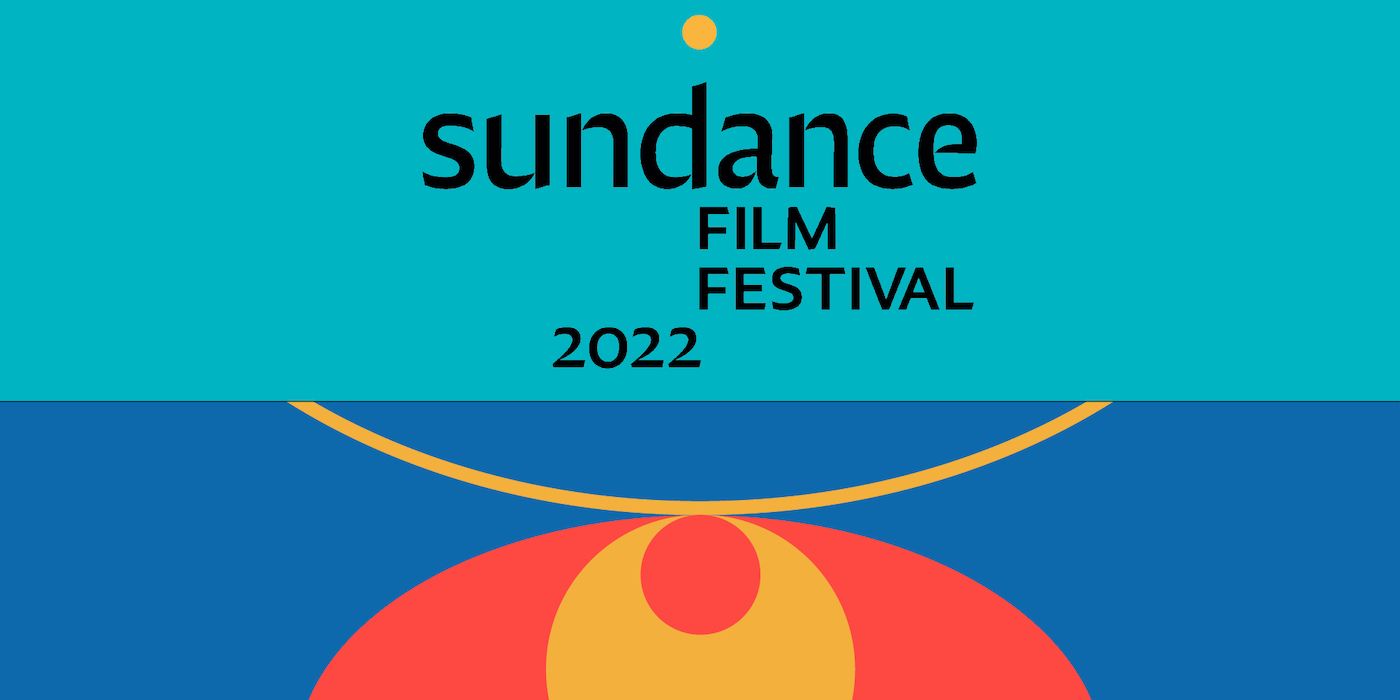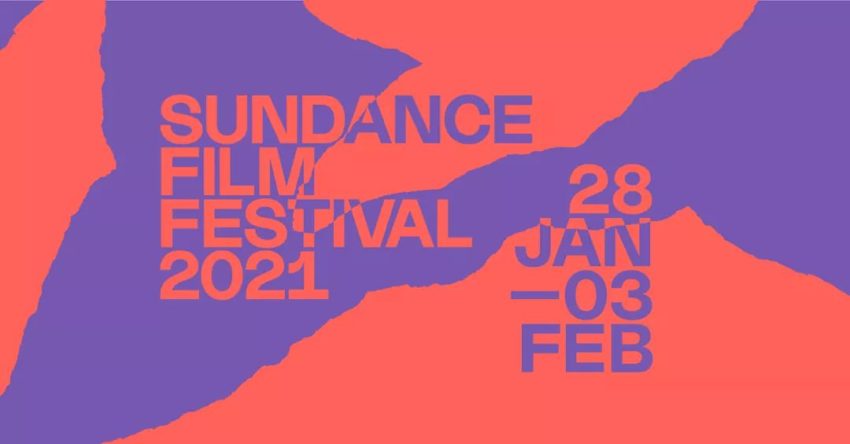
It’s the last week of January, so you know what that means. I’m back with dispatches from the front of Virtual Sundance, Round 2 (aka the Sundance Film Festival 2022)!
This year’s coverage of the festival won’t be quite as extensive as last year’s. I have just moved across the country–seriously, we’ve been in our new place for a week, and the movers haven’t even gotten our stuff here yet–and had thought that I wasn’t going to be able to attend the festival at all this year. While the 2022 edition of the festival had long been planned as a “hybrid” event, it wasn’t clear what would be available online (frankly, it didn’t seem like much), and I wasn’t going to be able to go to Utah for a week in the middle of a move. So I had written this year off a Sundance loss and resigned myself to it.
As the omicron/winter COVID surge began to sweep the country in December, film industry folks wondered if Sundance would push forward with the in-person festival. Public health experts in Utah predicted that the peak of the omicron surge in the film festival’s host state would coincide with the event. At the very last minute, the announcement finally came that the 2022 edition of the festival would, as last year, be entirely virtual. Well, I couldn’t help myself at that point. I snapped up some tickets, roped in my longtime Sundance buddy (my mom), and we were off to the races. I don’t have a festival pass this year, and I’ll have to take a few days off this week to, you know, unpack all of my belongings; however, I can’t restrain myself and will still probably watch more movies than any one person should watch in a week.
Writing my Sundance diary last year was a challenge that I greatly enjoyed tackling. I thought it would be fun to try it again, so expect regular updates here on the blog about what I’m watching at the festival. This year, I’m going to try out a streamlined version of the diary that consists mainly of capsule reviews. I’ve also tasked myself with being less descriptive in my roundups and more pithy with my opinion. We’ll see how that goes. “I’m working on developing my quick reaction muscle,” I tell you as I meaningfully tap the “About Us” tab.
So, without further ado, here’s the main attraction.
DAY 1 (Friday, January 21, 2022)**
All of the films I watched on Day 1 pointed me outwards, to other films I would like to watch. Living made me curious about Ikiru, of course, while The Exiles inspired me to seek out the documentaries of Christine Choy. Leonor Will Never Die piqued my interest in the Filipino action films, like the ones Leonor makes and dreams about, that clearly inspired writer/director Martika Ramirez Escobar.
Living (Premieres)
Oliver Hermanus directs this remake of Akira Kurosawa’s Ikiru (1952), while internationally acclaimed novelist Kazuo Ishiguro wrote the script, which transposes the story of Kurosawa’s film to post-war London. Living features an impressively restrained, incredibly effective central performance from Bill Nighy as a bureaucrat who struggles to find meaning in his life when he learns that he has six months left to live. Supporting turns from Tom Burke (pitch perfect here, simply oozing seedy charm), Aimee Lou Wood, and Alex Sharp round out a uniformly strong cast. From the stunning opening credits, which are designed to look as though they belong to a film made in the period in which the film is set, it’s clear that the film will be a treat for the formalists. Each frame of Living is rigorously, classically composed, and, combined with the gorgeously high contrast cinematography, this does lend the film a decidedly (deliciously) old-fashioned look. The plot, taken straight from the Kurosawa film, has a literary bent, full as it is of chance encounters, intertwined fates, and existential questions. The film is, ultimately, a morality tale, but the script never falsely reduces the emotional complexity of any situation to make a point or pull a heartstring. Despite a premise that sounds like the setup for something mawkish, Living operates in a controlled, repressed register that reflects its main character’s inner state. I liked this film quite a bit, but, having never seen Ikiru, I can’t speak to how it works as a remake.
The Exiles (U.S. Documentary Competition)
Violet Columbus and Ben Klein set out to make a biographical documentary about outspoken nonfiction filmmaker, activist, and professor Christine Choy; but during the process, they discovered that Choy had hours and hours of footage for an intriguing unfinished project. In 1989, Choy began filming a group of Chinese activists who had survived the Tiananmen Square massacre and been granted asylum in New York City. Choy, a Chinese-American woman, found herself at the perfect cultural crossroad to take on the project. (She’s blunter, saying she was able to film the subjects because “I spoke Chinese.”) Columbus and Klein endeavor to help Choy finish the project, following up with the subjects thirty years later and reminding audiences of the significance of the Tiananmen Square massacre. The two intentions of the documentary never came together meaningfully for me (the profile of Choy and the recovery of Choy’s old project), although the thread of the film that concerned the survivors of the massacre in the present day was undeniably moving.
Leonor Will Never Die (World Dramatic Competition)
Perhaps the strangest film I’ve seen so far this festival, Leonor Will Never Die might best be described as an experimental film about filmmaking, turning life into art, dealing with death, and action films from the Philippines. Martika Ramirez Escobar wrote and directed this never less than involving movie, which takes so many surreal turns that you can’t help but keep watching. Leonor (a fantastic Sheila Francisco) is an aging, retired action film maker. When she gets hit on the head and goes into a coma, she gets stuck in a script she’s been working on for many years. The coma/dream sections of the film are faithful, affectionate recreations of the type of action film Leonor would have made in her career. I admired the craft and the ambition of this film, but I’m not sure I loved it. I am looking forward to watching this one again when I have the opportunity.
DAY 2 (Saturday, January 22, 2022)
My Day 2 schedule unintentionally provided me with two thematic pairs. Calendar Girls and Good Luck to You, Leo Grande featured women over 60 interested in challenging accepted norms about how women “should” age and figuring out a better way to live their lives. The documentaries Fire of Love and Lucy and Desi both spotlit real-life couples whose shared work changed the world.
Calendar Girls (World Cinema Documentary Competition)
If this movie doesn’t make you want to dance, then I don’t know what to tell you. Finnish directing duo Maria Loohufvud and Love Martinsen make their feature film debut with this charming documentary about a volunteer dance troupe in Florida made up entirely of women over 60. The film follows several of the dancers, including the troupe’s founder and leader, over the course of a year or so. The spirited women at the center of this documentary find meaning and purpose while performing with the Calendar Girls at a time in their lives when they feel like society expects them to be invisible. The highlights of the doc for me were the interpretive dance scenes sprinkled throughout the movie, which worked to both illuminate the women’s inner emotional states and also effectively translate the Calendar Girls’ dancing for the medium of film. Juno Films picked up Calendar Girls for distribution, with an expected North American theatrical release in the summer.
Good Luck to You, Leo Grande (Premieres)
Before I go any further, I have to get this out of the way: Daryl McCormack is a goddamn STAR. I hadn’t seen him in anything before I watched this film, and he a) held his own against Emma Thompson giving an absolute powerhouse performance and b) completely sold a character who is pretty much a gender-swapped, progressive version of the “hooker with a heart of gold” cliché. He pulled off the fantasy and kept the whole thing real without breaking a sweat. He knocked my socks off. Yes, he’s hot (that’s the point), but I can’t stop thinking about his performance. Brb, coming up with pitches about this for later because I have MORE TO SAY.
Anyway… if you can’t tell, I adored Good Luck to You, Leo Grande, directed by Sophie Hyde and written by Katy Brand. The film is a dialogue heavy two-hander that might easily have been a play; the astutely written script got noticed by producers because the single setting and two characters made it safe to shoot during a pandemic. The film’s visual style is rather subdued and utilitarian, but that worked for me, as the script and the performances are the main attraction here. Emma Thompson plays “Nancy Stokes,” an older woman who has never experienced sexual pleasure or satisfaction. She hires a much younger sex worker, “Leo Grande” (McCormack), to meet her in a hotel room and hopefully, finally give her a sexual encounter to remember. Over the course of four meetings, Nancy and Leo experience many forms of intimacy with each other in addition to the sexual kind. This sex-positive dramedy never hit a false emotional note, and I will not stop recommending it to everyone I know when it comes out.
Fire of Love (U.S. Documentary Competition)
I loved this archival doc, which showcases the work and relationship of married volcanologists Katia and Maurice Krafft. Director Sara Dosa combines archival footage and lyrical narration (voiced by the inimitable Miranda July, an inspired choice) to create a French New Wave-inspired meditation on the volcanic forces of love and nature that shaped the Krafft’s lives. The artistic footage of active volcanoes, taken by Maurice during his lifetime, that makes up the bulk of the film is simply mesmerizing. I can’t wait to see Fire of Love on a bigger screen, which should be possible since National Geographic Documentary Films snapped it up for distribution. The story of the Kraffts, who come off in the doc as outsider adventurer scientists from an age bygone even before they lived, seems like a great fit for National Geographic.
Lucy and Desi (Premieres)
At the height of their influence, Lucille Ball and Desi Arnaz were a power couple if ever there was one. Comedian Amy Poehler’s documentary serves as a tribute to both their love story and their legacy in Hollywood. As a nearly lifelong I Love Lucy fan whose Dad encouraged her to read histories and biographies, none of the information presented in Lucy and Desi felt revelatory to me. However, the documentary makes wonderful use of archival audio to let Lucy and Desi tell their own stories in their own voices. Although Poehler refrains from relying too heavily on talking heads, Lucie Arnaz contributes extensive recollections of her parents, and a handful of performers from the generations after Lucy and Desi speak to the couple’s legacy in the entertainment industry. Ultimately, the film is standard in form for this type of biographical documentary but obviously made with love for its subjects. Lucy and Desi will debut on Amazon Prime Video in March.
*The festival officially kicked off on January 20, but I didn’t see any of the premiere screenings that night. My festival started on the first full day, January 21, so that’s when I’m starting this diary.
